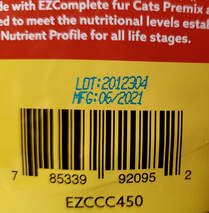 "Imagine this: You go to your favorite supermarket and come out with three bags full of groceries. Before you get in your car, you toss one of those bags in the garbage. Sound ridiculous? Of course it does, but that's in essence what food waste looks like every day across our country," says Frank Yiannas, the FDA's Deputy Commissioner for Food Policy and Response in an article Confused by Date Labels on Packaged Foods? By moving to a "Manufactured On" date ("MFG" on the package) from the prior "Expiration Date," Food Fur Life's manufacturer is responding to the FDA's Winning on Food Waste Initiative. Reports on food waste in the United States present clear - and alarming - data on the amount of food waste each year in the U.S:
20% of Food Waste at the Consumer Level is Due to Confusion about Date Labeling The FDA does not require nor regulate date labeling on packaged foods (other than infant formula). 41 states and Washington DC require some date labels - but there is no consistency nor coordination among states. There is no standardization of terms, no industry-wide definitions, no regulated or standardized method of determining what date should be used, how it is determined, and just what, exactly, the date is. Manufacturers are left to determine these dates with no guidelines nor date definitions. In fact, the dates on packaged and frozen foods were never meant to convey safety, rather "peak" freshness. Surprised? Most are! Due to a lack of information about the intent of these dates, most of us throw away perfectly good food. More than 80% of Americans are under the misconception these dates on packaged and frozen foods are related to health consequences of consuming the product. Not so. From the USDA's Before You Toss Food, Wait. Check it out! "Food poisoning bacteria does not grow in the freezer, so no matter how long a food is frozen, it is safe to eat. Foods that have been in the freezer for months (recommended freezer times chart) may be dry, or may not taste as good, but they will be safe to eat. So if you find a package of ground beef that has been in the freezer more than a few months, don’t throw it out. Use it to make chili or tacos. The seasonings and additional ingredients can make up for loss of flavor. "What about the foods in your pantry? Most shelf-stable foods are safe indefinitely. In fact, canned goods will last for years, as long as the can itself is in good condition (no rust, dents, or swelling). Packaged foods (cereal, pasta, cookies) will be safe past the ‘best by’ date, although they may eventually become stale or develop an off flavor. You’ll know when you open the package if the food has lost quality. Many [most] dates on foods refer to quality, not safety. See FSIS’ Shelf-Stable Food Safety fact sheet for more information." Thus, in-line with the goal of reducing food waste, our manufacturer has moved to simple date labeling by providing the manufacturing date. Given the prior "expiration" date was quite random and had nothing to do with "freshness" or nutrient life, we're happy to support this move and participate in the effort to reduce food loss and waste, an effort clearly needed. So How Long Does the Nutrition Remain Intact? Freeze-drying in particular makes foods incredibly shelf-stable, and freshness / nutrient retention is related to the quality of packaging and storage conditions. You can't beat cans (thus 25 year freeze dried cooked ham and chicken exist), but if in packing that minimizes oxidation, and the package properly sealed and stored long term in a cool, dry place, freeze dried foods remain fresh for years. With double-walled, BPA-free, food grade mylar with an aluminum core, the longevity studies conducted *on our products with our packaging* found our premixes remain nutritionally intact for the life of the shortest-dated product in them: the green lipped mussels, that are dated three years by the producer. It is between the third and fourth years the efficacy of the omega 3 begins to degrade. This does not impact consumption from a safety standpoint, but a nutritional standpoint. The EZComplete Premixes can be fed for at least three years from the date of manufacture with confidence your pets are getting the nutrition they need to thrive. It is our hope this move to a manufacturing date on Food Fur Life packaging is educational for all of us feeding EZComplete or using the EZ Egg Yolk. For those of us that thought these dates were related to safety, it is our sincere hope that now better informed, we can all take a new approach to using instead of removing what's in our cupboard or freezer, reducing food waste at home.
0 Comments
At long last, Food Fur Life's new batch of EZComplete fur Cats is scheduled for delivery, Wednesday July 7. !!!! And yes, that is THIS YEAR! (Just thought we needed to be clear about that, given the number of times the "expect it by" date has been moved). The store is open for PRE-ORDERS. We will not have product delivery until Wednesday (July 7), thus orders will start shipping Thursday (July 8). As always (when we have inventory), there are no restrictions on purchases. We want to thank everyone for your understanding and patience through this covid-related supply chain ordeal. We know it's been frustrating for those new to or interested in EZComplete fur Cats. Your support for our decision to allocate very limited inventory to kitties already dependent on food made with EZComplete was overwhelming and is something that truly warms the heart. And to those with kitties eating food made with EZComplete? Your willingness to be clear about your stock and food on hand versus need is deeply appreciated. Without ALL of your help, we would not have been able to make it through the numerous delays with inventory to ship to those in need. This is truly a community of people that care not just about their own kitties, but ALL kitties. For those in the U.S., please enjoy happy and safe Independence Day celebrations. The timing - well, it could have been better - but this news has put us in the mood to celebrate.
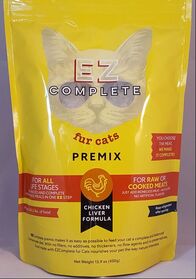 Right to the point, the shortest possible version: EZComplete fur Cats is in the last step prior to release for delivery. Our rep at the manufacturer “swears” we will have our product delivered by the end of this week (Friday, June 25). Given 2021 has been The Year of the Delay, Food Fur Life takes that to mean we will be back in stock sometime next week (Friday, July 2). (Please note, we do not mean to be flippant, but laughter is an important tool in getting through trying times. We take the health and needs of your furry family members VERY seriously. That is why we put the product on allocation for those kitties dependent on it, and provided resources to those who asked for alternatives to EZComplete while waiting for it to become available). The longer version if you would like to know what happened. As everyone is aware, 2020 and 2021 have seen covid-related supply chain problems in just about every industry. Reduced capacity, staff reductions, diminished shipping and freight capacity globally, new rules and restrictions, changes in processing of imports at borders – at every step there is the potential for impact. Covid-related supply chain problems have affected almost every company and every industry around the world. An Ernst & Young survey published in February found just 2% of respondents of the largest companies in a wide variety of industries report they were not affected. The pet food industry is no exception. Shortages of any number of ingredients meant some foods were off the shelves for weeks to months. Shortages in packaging, whether bags, bottles or cans meant companies had to reduce production: some managed the problem by rotating flavors available in popular brands. Food Fur Life was no exception. The new batch restock order was placed into a worldwide shortage of calcium. Our food grade eggshell ingredient is made in the U.S. with domestic shell, but eggshell is an easy replacement for calcium carbonate. Reduced production during the lockdown and high demand after meant a significant delay in delivery. Our manufacturer's strict quality controls means adding an alternate ingredient takes at least three months with audits and product testing. There was nothing to do but wait. And wait. Food Fur Life's eggshell finally arrived at the manufacturer - over two months later than our new batch normally would have been delivered to us. The “back in stock” date turned out to be a moving target. And thus it is we are pleased to FINALLY report EZComplete fur Cats is near the end of the last step prior to release for delivery: post-production testing. Of course, as it turns out, the (third-party) lab is backed up. Prior turnaround time was so reliable it was simply referred to as “the 5-day hold.” Ingredients are always ID and quality tested prior to production. Post-production testing is simply to ensure there was no contamination during production. (There never has been with strict controls in place during mixing and bagging). The manufacturer is certain testing results are imminent and we will have our new batch delivered this week. The bags are packed into cases, the cases are on pallets, ready and waiting for pick up on release of that data. BUT given 2021 is The Year of The Delay, Food Fur Life’s official expectation for delivery is next week (the week of June 28). There is no reason to expect further or even freight delay at this point. But there are 40 crossed paws by the “Food Fur Life” pets helping to make sure that is so. We know this has been a long and frustrating process. We thank everyone for your support and understanding during these most extraordinary times. When we have the actual delivery date scheduled (directly with the freight company) - typically two days in advance of delivery - we will mark EZComplete fur Cats back in stock and open the store to short-term pre-orders. (You place your orders ahead of the delivery normally through the store, they just can't ship until the day after delivery). ALL orders will be shipped the day after we receive delivery of EZComplete fur Cats. The website store will be back to business as usual, and there will be no restrictions on purchases. Food Fur Life continues to ship on time (within one to two business days), as per our shipping FAQs. We prepare packages for shipping typically in the evening, as pick-ups are the following morning. But the United States Postal Service is experiencing delivery delays due to the impact of covid-19. Fulfillment is located in northern New Jersey, and all packages are shipped via USPS Priority Mail. There have been staff outages at many sorting facilities across the country, and the main sorting facility of the USPS in northern New Jersey is no exception. This has contributed to slower delivery times. U.S. Domestic Delivery Further, the USPS Priority Mail system relies heavily on plane transport for the typical delivery time of 2 – 3 days depending on location. Clearly this ability for packages to travel by plane has been severely impacted in this environment. Most packages are now on the road. This means that packages seem to “disappear” from the system, sometimes for several (or more) days while “in transit to the next facility.” Neither Food Fur Life NOR the USPS has more information than that until the package is scanned in at the main sorting facility of the package’s destination. International Delivery As we have noted on the shipping FAQ page of our website, we have suspended service to Australia. We will re-evaluate this when international shipping returns to more normal processing procedures. Packages to Canada, Europe, Hong Kong and Japan are still shipping though delivery times may be delayed. However, the USPS has suspended delivery to many countries. The full list of suspended services is available here: https://about.usps.com/newsroom/service-alerts/international/welcome.htm We thank you for your understanding during these extraordinary times. And of course, we hope all of our pet parents and furry family members are healthy and stay safe! 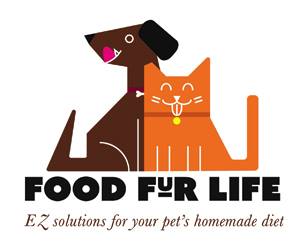 Safeguarding the health and well-being of our customers (and their pets!) is of paramount important to us at Food Fur Life. You, our valued customers, depend on our feeding solutions for your pets and our support in that process. We want to assure you we are taking utmost care with our product during storage, packing and shipping, as is our manufacturer when it is time to restock. We are truly fortunate as we were really well positioned coming into the economic and social changes that occurred due to the arrival of the novel coronavirus here in the U.S. You can rest assured we are taking every possible step to provide uninterrupted supply and to ensure your safety in the process. We hope that by doing our part, we're minimizing the negative effects of COVID-19 during this trying time. We are monitoring developments as they evolve and taking the appropriate steps — consistent with government and healthy authority guidance — to help and support the ongoing wellbeing of everyone across the business and in our broader communities. Thank you for your trust and confidence in Food Fur Life. Stay safe, we wish only the best for you, your loved ones and your communities! My husband and I just had to say good-bye to our one-year old kitten, Ramone. Yep. He was just barely one. My heart so goes to all of you who have been through this. Not that it is any easier when they’ve been by your side for 5, 15 or 25 years. It’s never easy. Never. In fact, I call it the black hole of sucking. It is an indescribable pain, a hurt like no other. But at one, we were literally blind-sided by the words “kidney failure.” Of course, at one, everyone – rightfully – expects to have many happy years with our kitties or puppies ahead of us, and any pet taken from us so young feels particularly devastating. The truly tragic irony of this situation is that we had to let Ramone go on the one-year anniversary of the day we brought him home. That exact day. One year before. Kidney failure. In a one-year old cat. 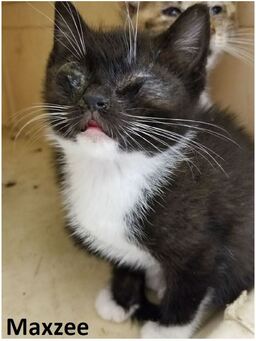 My husband and I were at the vet. Gary is a very outgoing, very … exuberant person. Gary’s not good at sitting down and waiting. So I’m in the exam room. The cat we brought in and the vet are in the back. I hear Gary bellowing as he walks past the door, headed for the crowded reception area “OMG THAT IS THE CUTEST KITTEN I’VE EVER SEEN! WE HAVE TO ADOPT THAT CAT!!!!” That little voice in my head immediately screams “NOOOOOOOOO! NOT KITTENS!!!!” (We have twelve older cats at home!) I pop out of the exam room to run interference. (Don’t worry, we know everyone that works in the clinic, and they already know we’re crazy. It’s a source of amusement for them). 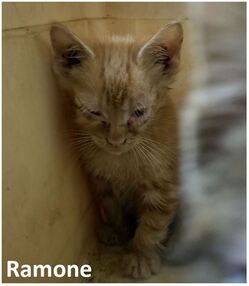 “Gary, we can’t just adopt someone’s cat!” “I DON’T CARE WHOSE KITTEN THAT IS, WE HAVE TO ADOPT THAT CAT!” Linda (one of the receptionists) says “Actually, I think Gary’s talking about one of the kittens just brought in from the hoarding rescue.” The little voice: “Oh GREAT. There’s no getting out of this one!” The cogs in my head have flown into high gear. What was I going to do? Gary just got out of the hospital two weeks ago. He almost died. He “should” have died. He had a less than 10% chance of surviving the multiple organ failure (caused by a damaged heart valve from numerous tick bite infections) combined with his “I’ll just walk it off” attitude to illness (Little voice in my head: “MEN!”). Tick bites … from trapping feral cats all over Northern New Jersey dating back almost 20 years. I wanted Gary to get a service dog to motivate him through what will be a long recovery. But he wanted this kitten. Gary is smitten. Gary is determined. This is GOING to happen. I turn to Gary, “You cannot adopt just one kitten.” I turn to Linda, “Are there any other kittens?” And thus it was we came to adopt the cats we named Maxzee and Ramone. OK. So now it’s a done deal. Our new-to-us seven-week old boys were so riddled with infections and parasites, they needed to be isolated at the vet at least their first few days (especially as we have immune compromised cats at home). Having accepted the situation – Gary needed these kittens – it was exciting – KITTENS!!!!! We’d fostered years before (we suck at it; we get far too emotionally invested. Trap-Neuter-Return was our thing). But we’d never kept baby kittens. We got them healthy, we adopted them out. But these boys we were going to get healthy – for us! And HOW thrilling for me? I get to apply all I’ve learned about diet and supplements for health over the past decade since beginning our raw feeding journey. I was so hopeful we could avoid the chronic illnesses we’ve had to manage in our older clowder. I prepared food for them (with EZComplete, of course!) and took it to the vet. In isolation, we couldn’t visit with them. Gary is not a particularly patient person. By day three, we’d already prepared our home for the kittens. We had an introduction cage set up in our bedroom. We stopped by the clinic to drop off more food and to ask if we could just SEE them. We understood we’d have to stay outside the glassed-in isolation area. And WOW were we shocked at what we saw: one kitten per cage. The little orange kitten – officially Ramone – was on his back feet, his front legs looked like windmills on the bars of the cage, and he was screaming! The little black & white kitten – Maxzee – was balled up in a corner of his cage, staring the wall. Gary FLIPPED out. I WANT TO SEE A VET. RIGHT NOW. (Our vet wasn’t on duty). The tech that took us back says “Gary, they’re all in with patients.” THE BLACK & WHITE CAT IS DYING. LOOK AT HIM! HE’S LOSING HIS WILL TO LIVE LIKE THIS. THEY HAVE TO BE TOGETHER! WHAT ARE YOU PEOPLE DOING???!!!! (Gary is a deeply caring person, but not the most tactful. If he thinks it, he says it). Clearly out of the “danger” zone by now, we decided they weren’t doing anything there we couldn’t do at home. We waited while they crated the kittens – together – and gathered their things. Ramone and Maxz were COMING HOME!!!!!!!!!!!!!!!!!!!! Together, our baby boys thrived. Home, in our care, Maxz and Ramone healed rapidly. Consuming what seemed an incredible amount of food, they quickly grew into handsome, healthy young cats. And yes, Gary did need those kittens. Their impact on his health and well-being was immeasurable. My heart sang. Nothing like kitty nurses to purr him to sleep despite his discomfort. And nothing like kittens to impart the innocent joys of just being alive. And, perhaps most important of all, Gary did more laughing that first month with the kittens than in the previous two or three years. Gary was healing, too. 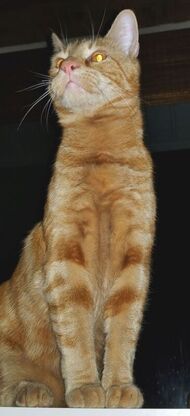 Eleven months after bringing the boys home, Ramone seemed a bit off. Skipping a meal here or there isn’t unusual for kittens, but his behavior was subdued. That isn’t normal. Concerned, off to the vet we went. Alarm bells went off in my head when I saw it was the vet calling first thing the next morning. We were NOT prepared for the news: “Laurie, Ramone is in kidney failure. He needs to be admitted to the hospital for IV fluids. You need to bring him as soon as possible.” My head was buzzing. The room started spinning. I heard nothing after that. Ramone was in kidney failure. Kidney. Failure. He was just one! At this age, the most likely cause is ingestion of something that damages the kidneys. But we’re well aware of toxins to cats, have no plants, and all of our cats are indoor-only. I dropped off Ramone for the four days of IV fluids. I called Carolina with the devastating news. I took her advice and got down on the floor and searched the house. I could find nothing to explain it. Even stranger? His kidney-related blood values on day four of IV fluids were the same as when tested after 36 hours. If this were an acute problem, his kidney values should have continued to improve. An abdominal ultrasound showed no congenital problem with his kidneys, and the vets began to suspect a genetic problem at the “microcellular level.” The little voice in my head: “NOOOOOOO NO NO NO NO NOOOOOOOOOOOO!” We brought our Ramone-y Pony home (nick-named during a growth spurt when his legs REALLY shot up!). Instructions were to give him daily sub-q fluids, and I use a form of vitamin B3, niacinamide, to lower phosphorus. Recheck was in one week. I needed to assist feed him the first day home despite cerenia and an appetite stimulant. But that was it. He needed the nausea and appetite support for only a few days, and he seemed back to 100%. THANK GOD. Blood work on recheck confirmed our observation. I was to continue giving him daily sub-q fluids. The next recheck was scheduled one month out. Life went back to normal, adjusted for the new routine of fluids and niacinamide. We were comforted that this might have been an acute episode after all. The evening before his one-month recheck, Ramone vomited violently. He hunched up, like a very nauseous cat, or a cat in pain. He had zero interest in the last meal of the day. I thought maybe he had a blockage. Rather than wait for his appointment, we took him in first thing. …and I can barely get the words out, because once again, we were completely unprepared: Ramone was in kidney failure. Again. My panic level went through the roof. They wanted to do another ultrasound. OF COURSE. The moment I heard the very somber tone of the vet's voice when he called with the results my heart sank. “Laurie…” was all it took. That was followed with “It’s not good.” I had to choke back the sobs. The ultrasound showed complete lack of structure in his kidneys. This was genetic. The vet wasn’t sure how much time we’d have with him, it could be just a few days. His kidneys were not capable of supporting life. The little voice wasn't little, it was screaming. "NOOOOOOO NO NO NO NO NO NO NO NO NO NO NO NO NO NOOOOOOOOOOOO!!!!!!!!!!!!!!!!!!!!!!!!" 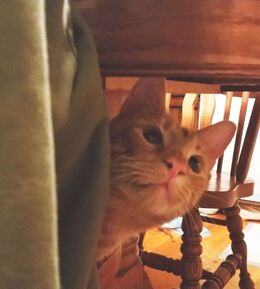 Is it time for heroics? We faced the problem of every pet parent at a time like this: what do we do? How do we handle this? We are willing to go to the ends of the earth for our cats, money (almost) no object. We will do ANYTHING for our cats. We seriously struggled to decide how much to do for Ramone. He's so young, should we consider getting him a kidney transplant? Or … What if sub-q fluids and cerenia and ondansetron made him feel better? Could we buy more time? What if I kept pilling him with niacinamide – could bringing down his phosphorus again enable him to spend more time with us? What if the vet was right about the kidney failure, but wrong about the timing, and Ramone potentially had months, not days? What if I assist fed him to get him through a few days – would that get him over a hump, giving time for sub-q fluids and meds to kick in? What if…. WHAT IF? WHAT IF? WHAT IF??????????? And this is when we need to turn to friends who understand our desire, but who can provide a more rational outlook. A dear online friend to Carolina and I, Amy, put a beautiful voice to end-of-life decision-making at times like this. She coined it “Love and Cheese Danish.” And Carolina – and others on Facebook, also familiar with Amy’s gift to those of us going through this incredibly painful process – reminded me of the very basic principle of Love and Cheese Danish. The message is simple: make decisions based on what is best for your pet, not for you. It is 100% about their quality of life. That is ALL that matters. Make their last days, weeks, or months an absolute heaven on earth. Worry only about their happiness and comfort and spoil them rotten. Feed them those human foods they love (so long as they aren’t actually toxic, of course!) Shower them with love and happiness and make being here FUN. Of course our time with our pets is always too short. Of course we want to do everything we can to make them feel better so we have more time with them. In fact, as I talked through how far to go with Ramone with Carolina, it became clear I had to fight EVERY instinct I had to “DO” something. It is so much easier to act than to not try; to not fight for more time together. Doing NOTHING to prolong life is damn near impossible. Carolina helped keep me on point. The ultrasound was definitive: Ramone’s kidneys cannot support life. Any time would be temporary. A kidney transplant is an extreme process – and it certainly isn’t best for the donor cat that must also be adopted. Ramone would be put through hell, especially as he was not a kitty with a calm personality who loved to travel. As a cat, Ramone may anticipate a meal, but he does not hope he’ll feel better tomorrow. He knows today, right now. One of the (oh so many) beautiful things about cats and dogs is that they live in the here and now. This knowledge must inform our decisions at times like this. One of the last, most difficult things we can do for our fur babies once diagnosed with a terminal illness is give them peace and joy while they are still here with us. Decision-making when our pet has a chronic disease that can be managed should not be the basis of decision-making when they have been diagnosed with a terminal illness. To prevent our cats or dogs from suffering, we need to acknowledge the difference. Carolina gently helped me refocus on Ramone, not Ramone’s length of life with us. Not what we want. Not more time. No matter how much I didn’t want to hear it – no matter how much I didn’t want to do it – no matter how hard I had to fight with my desire to act – my heart knew Carolina was right. And what was best for Ramone was NOT SUFFERING. It was time for Love and Cheese Danish. Ramone had saved Maxzee. Ramone had helped save Gary. It was time to just love our little boy. It was time to stop trying to save him. It was time to make what time he had left with us glorious. 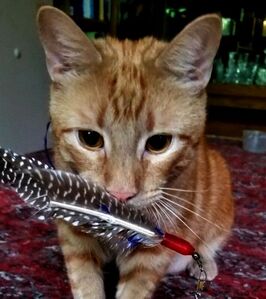 Ramone received fluids and shots of cerenia, famotidine and B12 before being sent home with us. He strutted on those long legs, tail up, head-butting us and his kitty friends. He arrived home just prior to mealtime. He was excited for the meal, standing on his hind legs as he always did, pawing the edge of the counter, meeping, waiting for me to “accidentally” drop a piece of meat, a special treat no one else got. I already knew his “cheese danish:” playing with the feather wand toy. Ramoney Pony LOVED to “play feather,” so of course that’s what we did after dinner. He didn’t play with his usual verve – so I slowed it down for him. He growled contentedly each time he caught it (so freaking cute he never lost that!), and I laughed and cried at the same time. He tired quickly – but he was so happy!!!!! At bedtime, I asked him if he’d sleep with me as he had been this past month. I carried him to bed. He curled up into my chest and neck for what turned out to be one last time. When I woke up the next morning, he was under the bed, hunched up. He’d never done that before, the hiding. He had no interest in eating, only drinking water. He was totally uninterested in feather. It was already time. Ramone left this life peacefully, at home, on the day of his one-year anniversary of coming home to us with Maxzee. He’d been our angel. He’d performed his miracles. It was time to let him move on. We gave Ramone the hardest gift to give, the last gift any of us can give our beloved. We didn’t let him suffer for us. And I thank Carolina and all of my friends for helping me – us – make the right choices for Ramone. Sometimes, all the “cheese danish” in the world can’t get them past whatever it is that is taking them from us. But this approach will always guide us to what is best for our babies. As Amy writes, with this approach our pets “knew nothing but love without the stress before saying good-bye.” It may hurt us the most, and it IS unquestionably he most difficult path – but knowing we’ve done what is best for THEM helps us adjust to our tremendous loss. Love & Cheese Danish Written by Amy Lindemann Cichowski and published here with her permission. “Many years ago, our dog Ellie Mae started to bleed from her mouth. The vet found a tumor on the roof of her mouth and the biopsy showed that she had a highly malignant form of cancer. He removed what he could, but gave her a 30-day prognosis, due to the fast growing nature of this type of cancer. Ellie Mae was our heart dog and we wanted her as comfortable as possible for the last days of her life. We bought her canned food (which she absolutely loved), DH slept on the floor with her (and would often wake up to find her up on the sofa and he on the floor), and everything we did with her was things that she wanted to do. One morning we had some cheese danishes that we bought from a bakery and decided to break one up, put it on a plate and feed it to her while she lounged on the sofa. Ellie Mae was a smart girl, and quickly realized that with all this special treatment, she didn’t want to leave us for a while. She got cheese danish a lot from us, and lived another 18 months before she died from a massive stroke at age 14 (old for her size). The ‘Love and Cheese Danish’ treatment was born. I’ve used this for every one of my babies when they have been given a terminal prognosis. When Bob Marley and Eightball were diagnosed with cancer in 2010, Bob lived another 7 months with a lung cancer diagnosis (they gave him 2 months), and Eightball lived for a year. I know we all spoil our babies, but there are some things that I do differently during their treatment. I found that Eightball loved to be fed on the kitchen counter, and while he loved to sit on my lap, was often crowded out by the other cats. He immediately got top lap priority and was grateful for it. The vet prescribed medications which didn’t settle well with him – first of all he hated to be medicated and secondly they appeared to upset his stomach. He freaked out with every trip to the vet so I stopped forcing it on him. Sometimes the treatment causes so much stress that it adds to their fragile condition more so than helps them. I would never suggest to anyone to stop what the vet prescribed, but realize that I talked to the vet before I made any changes. He thought it was fun to drink out of our water glasses, and even more fun when he thought he was getting away with it (we used to scold him for it), so I’d leave glasses of water around the house so that he could “get away with it” and drink from them. If he was settled in my lap and I needed to do something, well, that something had to wait (if it could). He thrived. Finding their “cheese danish” isn’t always easy, particularly if they are spoiled in the first place. But I always work to find what makes them happiest, and it’s almost as if they start to enjoy life so much that they put in the extra energy to live longer. No restrictions on what they want to do (unless it truly harms them) and give them things they least expect. Give them what they want, and love, love, love on them the entire time.” Obviously, if kitty is on medications that will do harm if just stopped, discuss any change in treatment with your vet. But when nothing seems to help, consider ‘Love and Cheese Danish.’ And maybe you’ll find the end isn’t as near as you feared. If it is? Kitty knew nothing but love without the stress before saying good-bye. Fly free, Ramone. Thank you for joining us as a stop on your way.... ~ Laurie (& Gary, my hubby) Postscript 2020. Gary, Laurie's husband, lost his fight in November 2019. Gary had many kitty angels waiting to greet him, including baby Ramone. 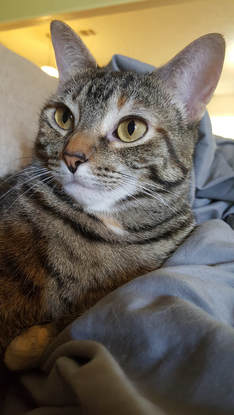 Blanket Blanket Dear friends, this is a different blog post…. We usually write articles about nutrition and health, but this one is personal – this is the story of my own journey against this horrible disease. Only those who have a cat with PICA know how devastating this disease is. Unlike any other, there is nothing you can do to prevent or foresee it – it can happen anytime, with horrible consequences. I decided to write this post as up to now, I really hadn’t heard of a permanent solution, a “cure” for feline PICA… But then a small miracle happened – or was it? We beat it! And I feel I must share our experience as if we can help even one kitty out there…. All she went through might make sense…. Might have been worth it. Without further ado, here is our story – Blanket was found on the streets, either abandoned by her mom, or someone, but either way – she came to me as a malnourished soon to be bottle baby – itty bitty, and full of spunk! It didn’t take much to get her going though – aside from tiny, she wasn’t ill, and good food would bring her to great health. She was quickly transitioned to EZComplete and had a voracious appetite. She grew into a gorgeous, healthy little kitty! One day, when she was a little over one year old, I went out of town and upon my return I noticed that my blanket (how’s that for “well” chosen name?!) had holes in it! LOTS of holes! I didn’t know what had happened, and started watching all my cats like a hawk. That’s when I caught Blanket eating my couch – yep – the couch. She had already made a huge hole in it and was already munching on the stuffing! Little by little she started to eat everything – her favorites were cloth items – blankets, sheets, couch, towels, pants, shirts…. But she also ate my wall, the wooden cat tree, my mattress... There wasn’t a way to “keep things away from her” – because that meant not having a bed, a couch, clothes, mats, or even walls. 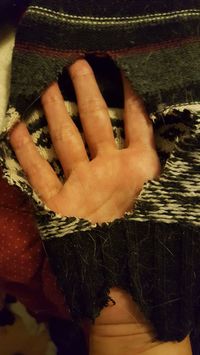 Vet trips were done, but there was absolutely nothing wrong with her – she was the picture of health… Which was both good and bad news…. Good because of course you want a healthy baby! Bad because medically there wasn’t anything I could do. There were theories about how kitties that are abandoned by their moms can develop PICA…. Some people found help by adding lanolin oil to their food, as in some cats this seems to be what is called “Wool suckling pica”, and by replacing this component of the wool – lanolin, you might be able to help to curb the craving... I did that, and I thought it was helping…. If it was, it wasn’t enough. I also did the best I could to redirect her chewing to Lamb Ears chews – while she DID love that, I wasn’t able to make her chew on that 24x7. Blanket’s first hospital stay with a blockage was on 10/21/2016 – she was 16 moths old. She started hacking and threw up what I came to call a “thing-ball” (Thing-balls were much like hairballs, but made up of things instead of hair). From that point on, she wouldn’t keep food down anymore, and would just keep vomiting. Off to the vet we go – X-rays are done, which show a pattern of gas, but are somewhat inconclusive. Since she went to the vet very early, she spent all day on fluids and getting X-rays to see the progression of the blockage – she finally passed it, and we dodged a major bullet. Three months later, on 01/07/2017, Blanket passes another thing-ball and starts throwing up. I immediately take her to the ER, who tells me she isn’t blocked, and has gastritis – they want to keep her IV and antibiotics. I ask them to see the X-Rays. There it was, her stomach and intestinal tract all full of gas – when I brought that up, the vet said that nope – that wasn’t a blockage. No one in the ER would do anything other than leave her on fluids/antibiotics. I took her home with me, as I KNEW that was a misdiagnosis, to wait for my vet on Monday (This was Saturday). On Monday, at 7am I was on my way to my vet. There was no doubt that was a blockage when my vet saw the x-rays, and the radiology report confirmed the location for the exploratory surgery. Blanket had ingested a piece of my exercise pants made of Dri-fit, and it had absolutely devasted her gut tract – it was as though she had ingested acid – her gut was paper thin, totally corroded. A few days later, while Blanket was still in the hospital, my other cat Bugsy started having very similar symptoms…. Which was strange, since Bugsy doesn’t have PICA. Misdiagnosis after misdiagnosis, to make a long story short, it turns out that Blanket had eaten my pants, thrown up half of it, and since she eats raw meat, Bugsy thought it was a nice lunch – yuck! Ate the meat, along with the other half of the pants that she had thrown up, and ended up blocked too. Now I had her on my vet, and him going through Emergency exploratory surgery at the ER, at the same time (I only foud what happened after Bugsy's surgery, when the ER vet scooped up the other half of the cloth). 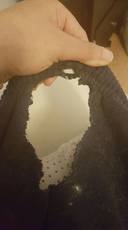 Fast forward to August 2017, seven months later. Blanket again tosses out a thing-ball, and I immediately go off looking for what it could be – I find my shorts, with a huge hole she had eaten (picture on the right). She starts again, throwing up violently. Luckily a day at the vet on fluids made her pass that one – another bullet dodged! November 01, Blanket hacks and violently throws up dinner. I immediately knew that was bad. Decided to fast her and leave a message to my vet saying we were coming first thing in the morning with a blockage. Sure enough – Blanket was blocked, and another exploratory surgery was in order. This time she had eaten the tip of my winter glove. It took me weeks to realize that she had fished this glove through a 1” opening on my dresser and eaten the tip of it. That-is-how-bad-she-was. Anyways, as she is recovering from surgery at home, not even a week later, I catch her eating a bath towel. I immediately picked up the phone and made the call to her vet that would forever change our lives. First, I explained to him that I had just caught Blanket eating a towel, and that I was afraid for her life – it was much too soon to have another surgery. Then I said I needed him to keep a very open mind, as that had not been done before – but I had my reasons to think it would work.
He met with all the vets in his practice, and all but one agreed with me and him. We scheduled the surgery for as soon as possible, and that day couldn’t come soon enough! The days leading up to that surgery were excruciating – walking on eggshells doesn’t quite explain what I was feeling. Every day she didn’t hack, every day she didn’t block, was a victory…. And then finally, the day arrived! I had all these feelings within me – guilt, sadness and relief. Guilt and sadness because I knew I was putting her through pain, and couldn’t explain to her why she was going through that yet again <3…. Relief because if that worked, she would never go through that again! I was finally looking forward to sleeping a full night without the fear of her eating something that could potentially kill her…. Blanket did great through surgery, and the 4 large molars and 4 large pre-molars were removed. We came home, she ate a meal, and few hours later, something very interesting, very telling, happened:
Blanket jumped on the coffee table and incessantly started to look for something to chew. She was completely OCD – desperate. She finally found a dried lamb ear that I had hidden from her, as I was scared of being too rough on her stitches…. Since she was so desperate, I gave it to her and she ran away to chew on it. My instincts kicked in, and I decided to give her a dose of buprenex – that was just too strange... She was just too desperate to chew on something. As soon as the bupe kicked in, she stopped chewing. And that was the last time she chewed on something – the last time. Folks, Blanket’s PICA wasn’t OCD – it was PAIN. Even though there was nothing that could be seen through X-rays, and she had no teeth/gum disease, she was in pain, and she chewed to relieve that pain. That became SO clear when I gave her Buprenex and she stopped chewing! And of course as clear as day now, that her teeth are gone, and so is the behavior. I wasn’t expecting this – I was expecting her not to be able to rip and tear the cloth material…. But the behavior itself is gone. In hindsight, it all makes sense…. Babies chew to relieve the pain of teething…. Kids with braces chew gum for pain relief…. Why wouldn’t cats? The issue with cats is that as obligate carnivores, their teeth are made to rip and tear – unlike us that chew in and up and down motion, they chew back and forth – and when they rip, their tongue hooks complete the job in aiding them swallowing whatever they are chewing. The damage is done. Friends, I don’t know if this is a solution for someone else other than us…. But after going through what we have gone through, I can’t imagine why it’s not possible to think that this might be a physical problem, instead of purely a behavior problem – honestly. My Blanket is not, by any means, a stressed out kitty – she isn’t OCD in anything else – she has no reason to be. She displays no signs of any OCD behavior – why PICA? Why are all these cats suffering from PICA? Why is no one out there considering the possibility of pain? I know this might be seen as a radical solution – trust me, I was well judged when I shared this idea in an online group, and I might be judged now – but to me, it was far more radical to know that she would be going through a life of one exploratory surgery after another – she simply wouldn’t survive. It might be too soon…. But this is the longest she has been without chewing on something…. Her recovery was very quick, and she didn't skip a beat. As for me? I am finally able to sleep through the night knowing that when I wake up she won’t be blocked. Walking on eggshells is finally behind me. Carolina
Egg yolk, a true nutritional powerhouse, is rich in choline and vitamin E, and brings almost every nutrient our pets need. New Zealand green-lipped mussels provide a unique combination of anti-oxidants, anti-inflammatory omega 3s, and are rich in glucosamine and chondroitin, important in joint health. Digestive enzymes bring many benefits, reducing organ stress, improving digestion, and increasing nutrient utilization. These are an important inclusions especially for those that opt to cook the meat, as cooking destroys the naturally occurring enzymes in the meat. Tragically, one out of every two dogs will be diagnosed with cancer sometime in their life. Thus, we view the addition of kale, brussels sprouts, carrots and blueberries a valuable inclusion to the diet, important in helping to reduce their cancer risk. Finally, a few vitamins and minerals are included to account for what is missing by not feeding whole prey.
With EZComplete fur Dogs, dog moms and dads will be able to control the main ingredient, the meat, their pups able to enjoy fresh, truly human grade meat, so easy to make complete & balanced with EZComplete! We look forward to helping puppies and adult dogs thrive as EZComplete has done for kittens and cats! Tired of Hairballs? Food Fur Life Proudly Introduces - The Incredible Edible (EZ) Egg (Yolk)!7/20/2017 We are proud to announce that human grade – no additives, no flow agents – powdered EGG YOLK is joining our product line-up! Are you tired of Hairballs? Did you know that egg yolk is one of the best natural hairball Preventatives? As discussed in our article - Hairballs - How Best to Manage Them, Egg yolks provide many nutritional benefits, but what concerns us as far as hairballs, are specifically the choline and lecithin. Choline. A component of choline is acetylcholine. Acetylcholine acts as a major neurotransmitter for the autonomic nervous system (which includes the GI tract). The stomach and the intestines contain a muscular layer that allows for wave-like contraction of the organs, known as peristalsis. This process propels food through the digest tract. The National Digestive Diseases Information Clearinghouse states that acetylcholine increases the contractions seen in the muscular layer, thus improving peristalsis and pushing food efficiently through the digestive tract. Choline (and its component acetylcholine) improves GI motility, which is what propels hair through so it comes out the proper end. Lecithin. Fat is what binds the hair in the stomach, creating that sticky, often stinky, gooey mess that is a hairball. Lecithin is a fat emulsifier: it emulsifies the fat binding the hairball(s), enabling kitty to pass the ingested hair. An species appropriate diet, brushing regularly, and adding egg yolk to your kitty's diet are great natural ways to prevent the oh-so-dreaded hairball problems. But wait! There is much more! “What's so special about egg yolk?” you ask? Eggs are a nearly perfect food, and the yolk contains the bulk of that nutrition. Discussed as “nature’s multivitamin” in many articles, eggs are truly a powerhouse of nutrition as one of the most nutrient dense foods on the planet. With almost every essential vitamin and mineral our pets’ bodies need, egg yolk is the perfect superfood complement to any diet – and essential in a homemade diet, most notably for choline which almost always come up short without the addition of egg yolk (or whole egg). There is no source of choline richer than egg yolks, with 820mg of choline per 100 grams. Not even beef kidney (the food with the next-highest choline content) rivals that of yolk - egg yolk contains 60% more choline per 100 grams. (!!)
Egg yolks are also one of nature’s richest sources of biotin. Biotin supports healthy metabolism of fatty acids, amino acids, and glucose. It is essential for healthy thyroid and adrenal function, a healthy cardiovascular system – it also protects brain function and fights cognitive decline. However, biotin is probably most renowned for its role in healthy, beautiful skin, hair and nails. In our pets, this means egg yolk will contribute to soft, silky, shiny fur; aiding in resolving dandruff; and helping to prevent cracked dry nails and fungal infections. To learn more about the benefits of egg yolk, we discuss each ingredient in the EZComplete premixes, including egg yolk, here. Of course, the EZComplete fur Cats and EZComplete fur Dogs premixes already contain the egg yolk needed to provide a balanced diet. But if your dog, cat or ferret has a health issue that would benefit from a multivitamin - consider egg yolk! Or if your dog has dandruff, or your cat or ferret is suffering hairballs, consider supplementing with egg yolk. And as fats moisten stool and increase transit time, if your pet is prone to constipation, reach for the egg yolk. It is a terrific tool for managing chronic constipation. Some pets may also need an osmotic laxative like lactulose, or a bit of fiber. But for our carnivores, this is the species-appropriate place to start. For those that have pets that do not enjoy natural, raw yolk, or for those of you that need to cook too many eggs to be practical, we've done the work for you. EZ Egg Yolk is a very easy-to-measure and use alternative! 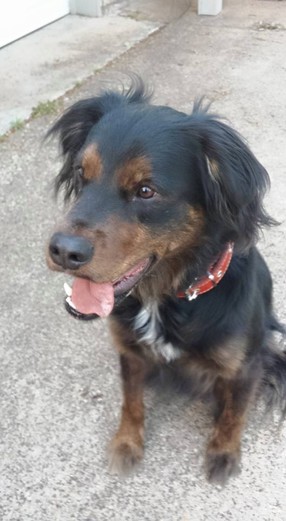 Bruce Wayne, Food Fur Life's Mascot Bruce Wayne, Food Fur Life's Mascot
Since we opened for business, we have been asked time and again why we have a dog in the logo, but no product for dogs? As many self-funded small companies, we had to make choices, to prioritize. It isn’t because we don’t love doggies just as much! The dog in our logo is Carolina’s Bruce Wayne! We felt strongly that cats are under-served and in higher need of a premix to balance homemade diets, and we launched EZComplete fur Cats first. But we worked hard to make EZComplete fur Dogs become a reality – and here we are!
We are THRILLED to introduce EZComplete fur Dogs, officially welcoming our woof, tail-wagging friends to our Food Fur Life Family. Featuring a similar formula to that for cats, EZComplete fur Dogs premix contains liver and pancreas as the nutrient and enzyme-packed organs; combines freeze dried bone (calcium hydroxyapatite) and eggshell as sources of calcium. Dogs thrive with a higher bone content than cats, having a higher requirement for many minerals. And by substituting a percentage of the bone for eggshell calcium, EZComplete Fur Dogs meets the needs of puppies, pregnant dogs, and nursing moms – while keeping a lower overall phosphorus content for senior dogs. Egg yolk, a true nutritional powerhouse, is rich in choline and vitamin E, and brings almost every nutrient our pets need. New Zealand green-lipped mussels provide a unique combination of anti-oxidants, anti-inflammatory omega 3s, and are rich in glucosamine and chondroitin, important in joint health. Digestive enzymes bring many benefits, reducing organ stress, improving digestion, and increasing nutrient utilization. These are an important inclusions especially for those that opt to cook the meat, as cooking destroys the naturally occurring enzymes in the meat. Tragically, one out of every two dogs will be diagnosed with cancer sometime in their life. Thus, we view the addition of kale, brussels sprouts, carrots and blueberries a valuable inclusion to the diet, important in helping to reduce their cancer risk. Finally, a few vitamins and minerals are included to account for what is missing by not feeding whole prey. With EZComplete fur Dogs, dog moms and dads will be able to control the main ingredient, the meat, their pups able to enjoy fresh, truly human grade meat, so easy to make complete & balanced with EZComplete! EZComplete Fur Dogs will be launched at the SuperZoo, Las Vegas, July 25-27th, and will start shipping 1st week of August. Mark your Calendars!!! We look forward to helping puppies and adult dogs thrive as EZComplete has done for kittens and cats! PS. Look for our ad on Dogster Magazine! |
Archives
August 2021
Categories
All

|



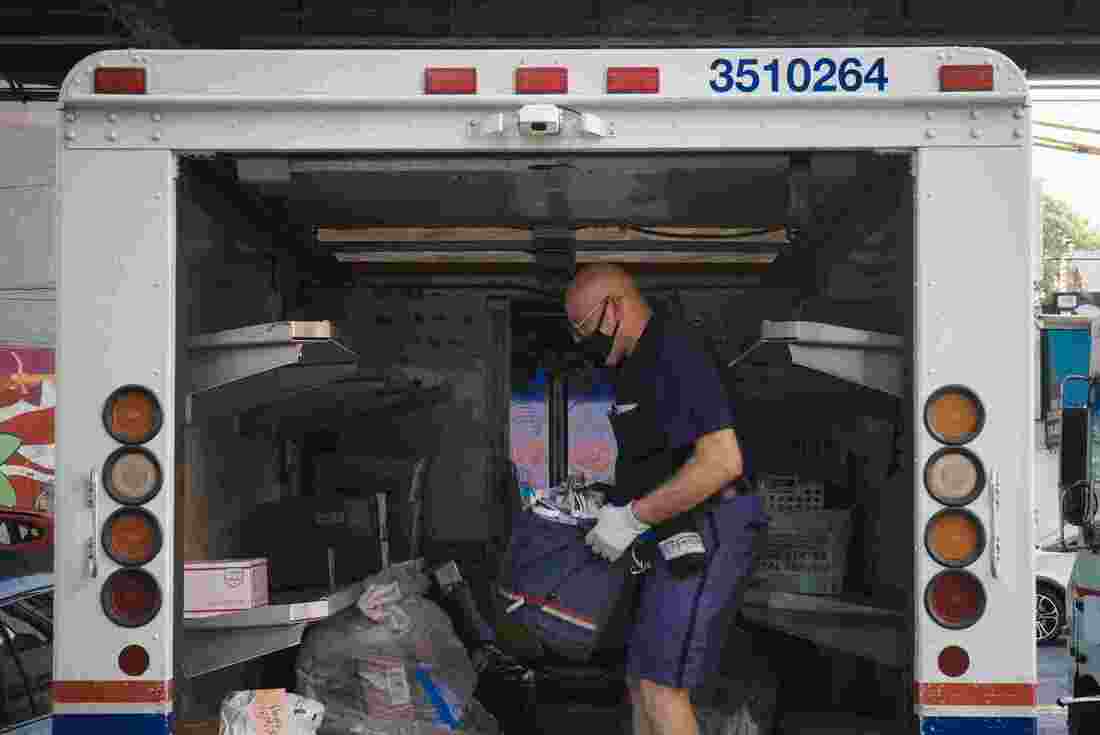
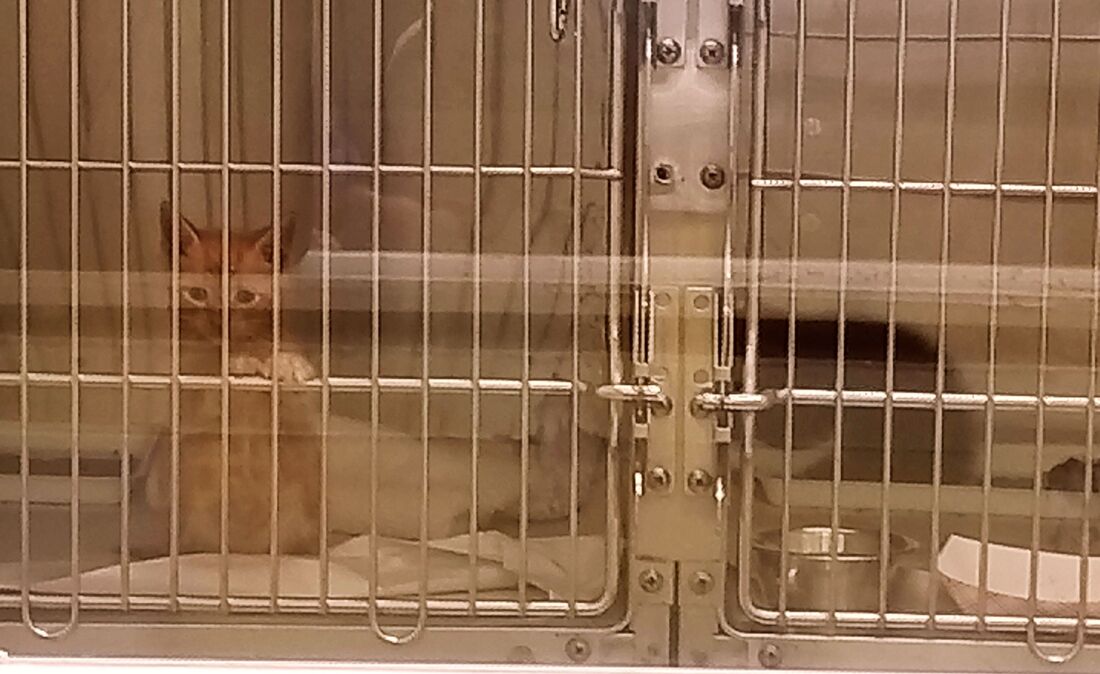
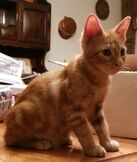
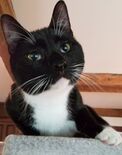
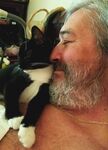
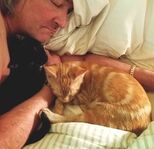
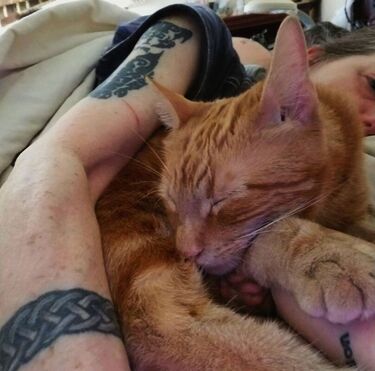
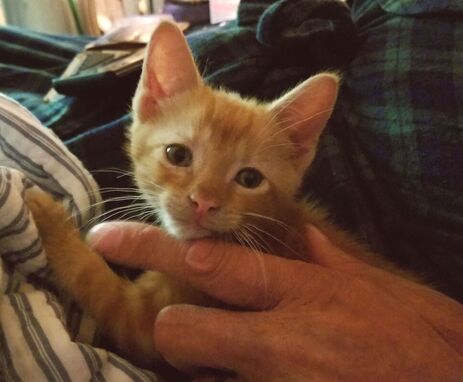
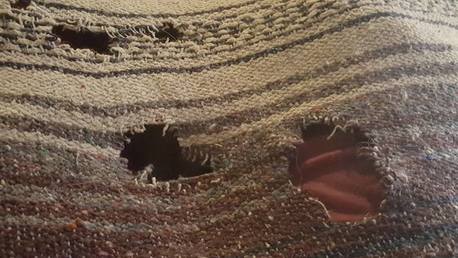
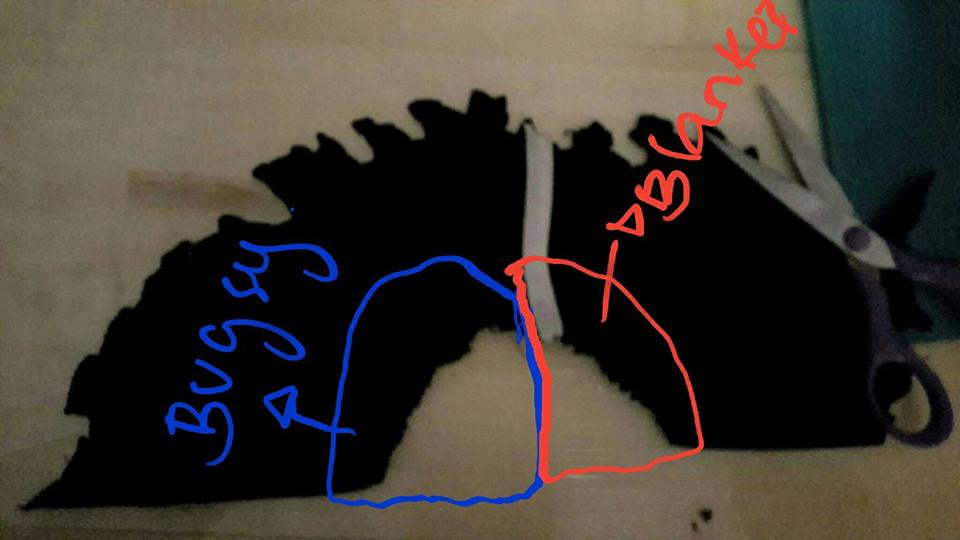
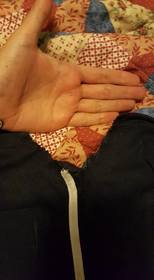
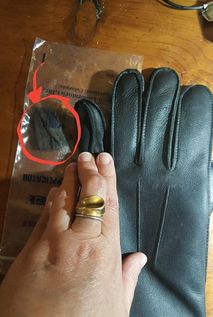
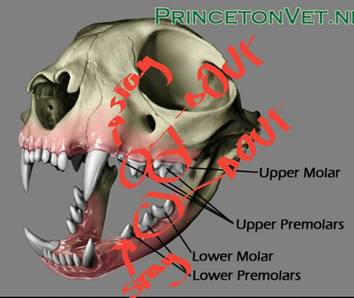
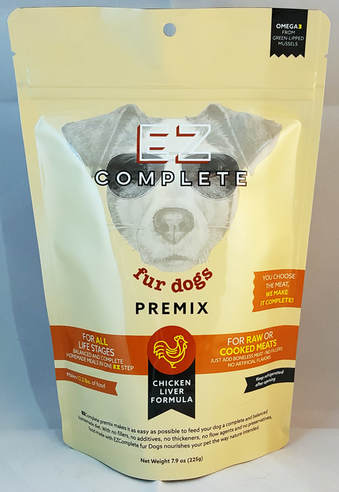

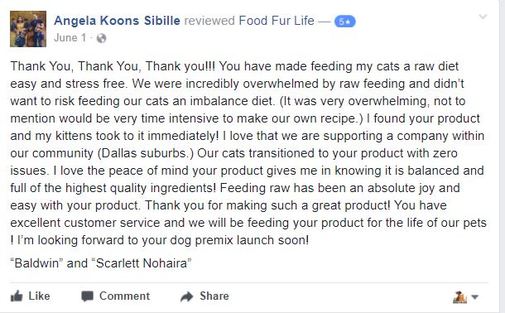
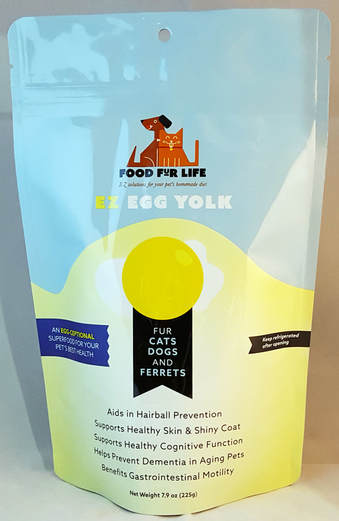



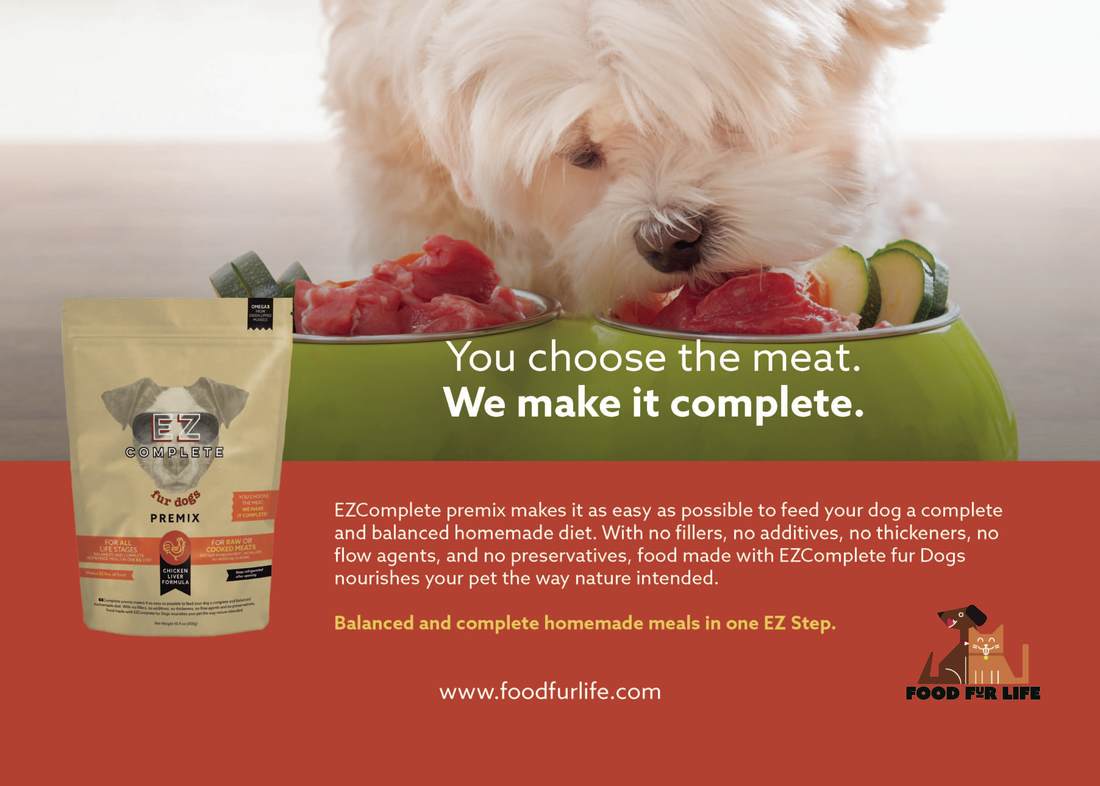

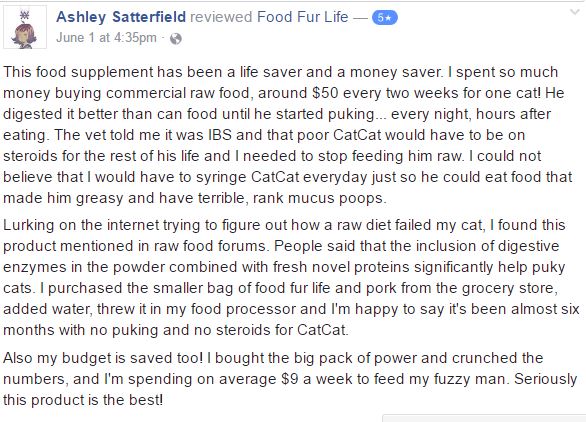
 RSS Feed
RSS Feed